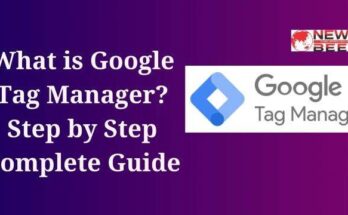Search Engine Optimization (SEO) is a dynamic field that requires a nuanced understanding of various elements that influence a website’s visibility on search engine result pages (SERPs). Among the multitude of factors, links play a crucial role in determining a website’s authority and relevance. Two key attributes associated with links are “Dofollow” and “Nofollow,” each carrying distinct implications for SEO strategies. In this comprehensive guide, we will delve into the intricacies of Dofollow and Nofollow links, exploring their definitions, importance, implementation, and impact on search engine rankings.
Table of Contents
ToggleDofollow and Nofollow Links in SEO
In the realm of Search Engine Optimization (SEO), understanding the nuances of link attributes is crucial. Two terms that frequently surface in discussions about SEO are “dofollow” and “nofollow” links. These attributes play a significant role in determining how search engines perceive and rank web pages. In this comprehensive guide, we will delve into the concepts of dofollow and nofollow links, exploring their definitions, purposes, and impact on SEO.
1. Understanding Dofollow Links
1.1 What is Dofollow Links Definition
A dofollow link is a type of hyperlink that passes authority and link juice from one webpage to another. In simpler terms, it is a regular hyperlink that search engines consider when assessing the relevance and credibility of a webpage. When a website links to another using a dofollow attribute, it signals to search engines that the linked content is valuable and deserves recognition.
1.2 Link Juice
Link juice is a term used to describe the SEO value or authority passed from one webpage to another through hyperlinks. Dofollow links are the primary conduits for transferring this link juice. The more high-quality dofollow links a webpage receives, the more search engines interpret it as a credible and authoritative source, potentially leading to improved rankings in search engine results pages (SERPs).
1.3 Impact on SEO
Dofollow links are integral to the SEO strategy of a website. They contribute significantly to the website’s backlink profile, influencing its overall authority in the eyes of search engines. Websites with a robust backlink profile, particularly with high-quality dofollow links from authoritative sources, tend to enjoy better visibility and higher rankings in search results.
2. The Role of Nofollow Links
2.1 What is Nofollow Links Definition
In contrast to dofollow links, nofollow links are hyperlinks that do not pass authority or link juice. When a website includes the “nofollow” attribute in the HTML code of a hyperlink, it signals to search engines that they should not consider the link as a factor when determining the linked page’s authority. Nofollow links are often used to address specific scenarios where a website wants to link to another page without implicitly endorsing it.
2.2 Scenarios for Nofollow Links
- User-generated content: Websites that allow user-generated content, such as comments or forums, often use nofollow attributes to prevent spammy or low-quality links from impacting their SEO.
- Paid links: To comply with search engine guidelines and avoid penalties, websites may use nofollow attributes for links associated with paid promotions or sponsored content.
- Untrusted content: When linking to content that the website doesn’t completely endorse or trust, using nofollow attributes can be a precautionary measure.
2.3 Impact on SEO
While nofollow links don’t directly contribute to a website’s backlink profile or influence its authority, they play a crucial role in shaping a natural and diverse link profile. Search engines value a mix of dofollow and nofollow links, as it indicates a more organic and authentic web presence. Additionally, using nofollow attributes appropriately can help websites avoid potential penalties for questionable linking practices.
You May Also Read:
What is Digital Marketing in Hindi
SEO Interview Questions and Answers
What is Affiliate Marketing Meaning
Google Search Console Interview Questions And Answers
3. How Search Engines Treat Dofollow and Nofollow Links
3.1 Google’s Perspective
Google, the most widely used search engine, treats dofollow and nofollow links differently. Dofollow links are crawled and considered as part of the ranking algorithm, contributing to a webpage’s overall authority. On the other hand, Google generally does not follow nofollow links, meaning they are not factored into the ranking algorithm. However, Google has stated that it may use nofollow links as a hint for crawling and indexing purposes.
3.2 Other Search Engines
While Google’s approach is influential, other search engines may have their nuances in how they treat dofollow and nofollow links. It’s essential for SEO practitioners to stay informed about the guidelines of major search engines to ensure effective optimization across platforms.
4. Best Practices for Using Dofollow and Nofollow Links
4.1 Dofollow Link Best Practices
- Quality over quantity: Focus on acquiring high-quality dofollow links from reputable and relevant websites rather than pursuing a large number of low-quality links.
- Natural link building: Aim for organic link building by creating valuable, shareable content that naturally attracts dofollow links from other websites.
- Anchor text optimization: Use relevant and descriptive anchor text for dofollow links to provide context to both users and search engines about the linked content.
4.2 Nofollow Link Best Practices
- Use in moderation: While nofollow links have their place, overusing them may raise suspicions. Use nofollow attributes judiciously and primarily in situations where they are necessary.
- Avoid manipulative practices: Refrain from using nofollow attributes to manipulate search engine rankings. Instead, focus on providing value to users and ensuring a diverse link profile.
- Regular audits: Periodically audit the website’s link profile to ensure that both dofollow and nofollow links are used appropriately and in line with SEO best practices.
5. Tools for Analyzing Dofollow and Nofollow Links
Various tools assist SEO professionals in analyzing and managing their backlink profiles. Some popular tools include:
- Google Search Console: Provides insights into the website’s overall link profile, including the number of backlinks, referring domains, and the distribution of dofollow and nofollow links.
- Ahrefs: Offers comprehensive backlink analysis, including information on dofollow and nofollow links, anchor text, and referring domains.
- Moz: Provides metrics such as Domain Authority and Page Authority to evaluate the overall authority of a website, along with insights into its backlink profile.
Conclusion
In the dynamic landscape of SEO, understanding the distinctions between dofollow and nofollow links is paramount. Dofollow links contribute to a website’s authority and ranking, while nofollow links play a crucial role in maintaining a natural and diverse link profile. Striking the right balance between these link attributes, coupled with adherence to best practices, can significantly impact a website’s visibility and success in search engine results. As algorithms evolve, staying informed about search engine guidelines and adapting link-building strategies accordingly will remain fundamental to effective SEO practices.
This comprehensive guide provides an in-depth exploration of dofollow and nofollow links, their definitions, purposes, and their impact on SEO. While it is concise, it covers the essential aspects of these link attributes and offers insights into best practices for optimizing a website’s link profile.
FAQs.
Q: What are Dofollow Links in SEO?
A: Dofollow links are hyperlinks that allow search engines to pass authority and link juice from one webpage to another. When a website links to another site with a dofollow link, it essentially endorses or vouches for that content. Dofollow links play a crucial role in search engine optimization (SEO) as they contribute to the overall link profile and can positively impact the ranking of the linked page in search engine results.
Q: What are Nofollow Links in SEO?
A: Nofollow links, on the other hand, are hyperlinks that include the “nofollow” HTML tag. This tag instructs search engines not to pass any authority or link juice from the source webpage to the linked webpage. While nofollow links don’t directly contribute to the linked page’s search engine ranking, they still have their uses. Websites commonly use nofollow links for user-generated content, sponsored content, or to prevent the passing of authority to untrusted or irrelevant sites.
Q: How do Dofollow and Nofollow Links impact SEO?
A: Dofollow links are valuable for SEO because they contribute to a website’s link profile and can improve its search engine rankings. They indicate to search engines that the linked content is trustworthy and relevant. Nofollow links, while not directly affecting rankings, are still useful. They are commonly used for paid or sponsored content, user-generated content, and situations where a website doesn’t want to vouch for or pass authority to another site.
Q: Can Nofollow Links be beneficial for SEO?
A: Yes, even though nofollow links don’t directly contribute to a page’s search engine ranking, they can still be beneficial. They can drive traffic to the linked website and help in building a diverse link profile. Additionally, having a mix of both dofollow and nofollow links appears more natural to search engines, which can be advantageous for SEO.
Q: How can I identify if a link is Dofollow or Nofollow?
A: You can inspect the HTML code of a webpage or use browser extensions/tools to identify whether a link is dofollow or nofollow. In the HTML code, a dofollow link has no specific tag, while a nofollow link includes the “rel=nofollow” attribute within the anchor tag.
Q: What is the significance of link building in SEO?
A: Link building is a crucial aspect of SEO. It involves acquiring quality, relevant, and authoritative backlinks to a website. Dofollow links from reputable sources contribute positively to a site’s authority and search engine rankings. However, it’s essential to maintain a natural link profile and not engage in spammy or manipulative practices that could lead to penalties from search engines.




